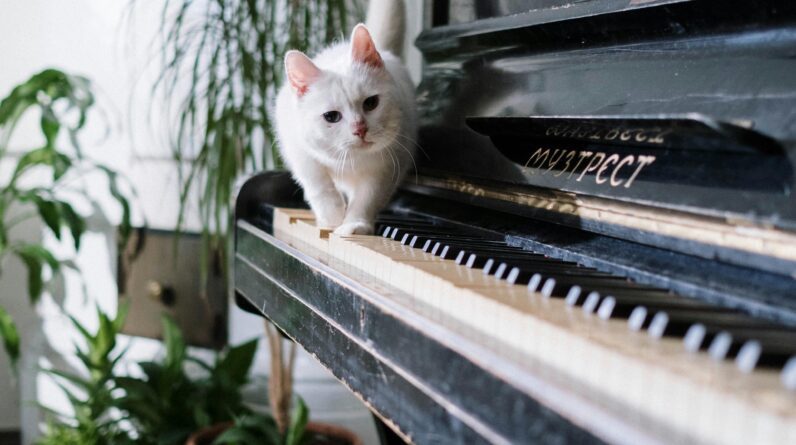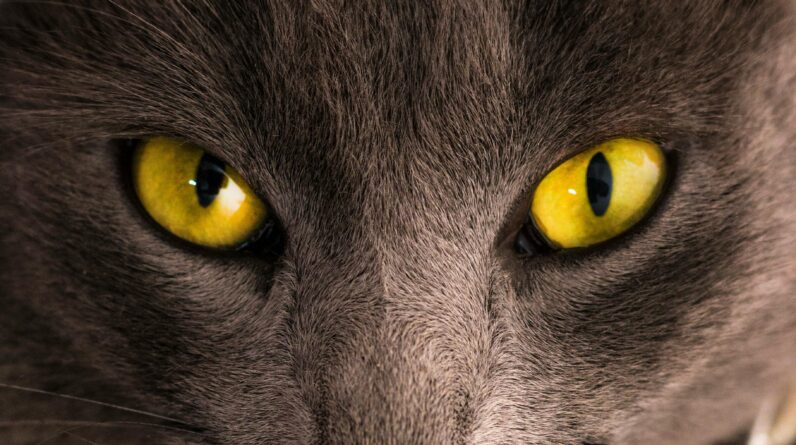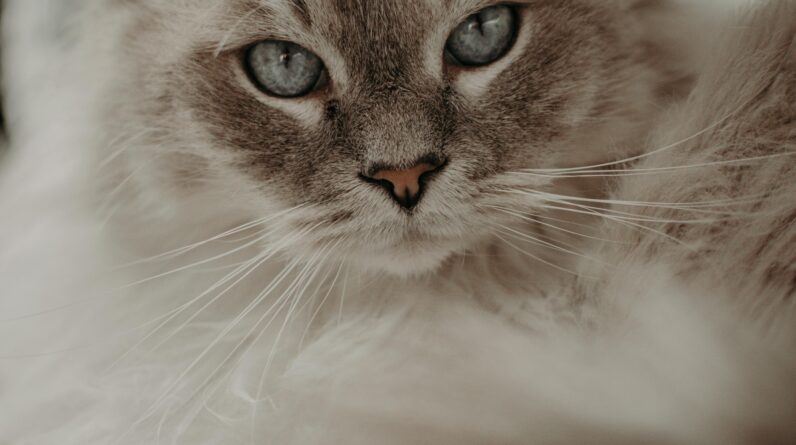If you’ve spotted peculiar black dots in your ginger cat‘s mouth, you’re not alone.
Many owners of flame-colored felines notice these mysterious marks as their pets mature.
This article reveals the truth behind these harmless spots, called lentigo, which are as common in orange cats as freckles on a sunny kid’s face.
We’ll explore what causes these beauty marks and explain why they’re usually nothing to fret over.
Discover the facts about your kitty’s spotty smile!


Key Takeaways
- Ginger cats often develop harmless black spots called lentigo around their mouths, which are similar to freckles in humans and don’t pose any health risks.
- It’s important to have a vet check out new or changing spots on your cat’s mouth to ensure they’re not serious conditions like dental issues or melanomas.
- While lentigo doesn’t require treatment, regular veterinary check – ups help monitor the spots and maintain overall oral health for ginger cats.
- These black marks on ginger cats are usually benign genetic traits linked to the ‘O’ gene responsible for their red fur color, adding uniqueness to their appearance.
Understanding the Black Spots in Ginger Cats


In ginger cats, the emergence of black spots around the mouth is typically a manifestation of Lentigo Simplex, a genetic condition that prompts melanocytes to deposit excess pigment.
Although these benign markings may appear alarming at first glance, they are pretty common among orange-toned felines and pose no threat to their overall well-being.
Defining Lentigo Simplex in Felines


Lentigo simplex in felines is a harmless genetic condition, appearing as small dark spots on the skin of primarily orange, calico, and tortoiseshell cats.
These dark patches are akin to freckles in humans and often develop on ginger cats’ gums, nose, lips, and eyelids.
Exhibiting no elevation from the skin’s surface, these flat black or brown blemishes can start showing up early in a cat’s life.
Feline lentigo is not a cause for alarm; it poses no health risk and requires no medical treatment.
The appearance of these pigmented spots results from an increased number of melanocytes – the cells that produce pigment in the skin.
Over time, you might notice more spots developing or existing ones becoming more pronounced.
This natural aging process distinguishes Lentigo simplex from other oral conditions, which will be explored next.
The Genetic Predisposition of Ginger Cats


Understanding why those distinctive black spots appear on the mouths of ginger cats takes us into their genetic makeup.
The ‘O’ gene, which is responsible for that captivating red fur color, also seems to be at play in the development of lentigo.
These genes are like a map leading to hidden treasures; for orange tabby cats, they mark the spots where charming freckles will surface.
As kittens mature into adult cats, you might start seeing more of these tiny dark specks around their mouth and even on their nose.
Ginger cats carry a special kind of beauty thanks to this genetic trait—a pattern that’s as unique as a fingerprint.
Scientists have linked these feline freckles to the X chromosome, making them an intriguing part of understanding cat genetics further.
While it may alarm some pet owners at first glance, rest assured that these markings are typically harmless signs of your cat’s individuality – not health concerns.
So every time your domestic shorthaired cat meows or purrs its way onto your lap, remember: those little black spots are just another reason why ginger cats are one-of-a-kind companions.
Distinguishing Lentigo from Other Oral Conditions


To effectively differentiate between lentigo and other oral conditions in ginger cats…
It’s important to recognize that while lentigo manifests as harmless black spots typically seen on the lips, gums, or nose, other issues, such as dental diseases may present with symptoms like redness, swelling, or discomfort.
Further complicating this area of feline health are melanomas—serious cancerous growths—which can also appear as darkened areas in the mouth but differ dramatically from lentigo both in their aggressive nature and potential impact on a cat’s well-being.
Identifying these distinctions is crucial for ensuring your beloved pet receives appropriate care and treatment.
Veterinary visits can be expensive! Get a Cat Insurance!





Comparing Lentigo to Dental Issues and Melanomas


Ginger cats, with their striking coats and endearing personalities, sometimes develop peculiar black spots in their mouths.
These spots often raise concern among pet owners, but they are usually a sign of a condition known as feline lentigo.
| Condition | Appearance | Age of Onset | Potential for Malignancy | Treatment |
|---|---|---|---|---|
| Feline Lentigo | Flat, black spots on eyelids, gums, lips | As young as one year | Benign, no cancer risk | Generally none required |
| Dental Issues | Red, swollen gums; tartar build-up | Variable, often adult cats | Can lead to further health complications | Dental cleaning, possible tooth extraction |
| Melanomas | Dark, raised growths | Mostly in older cats | Potential for malignancy | Surgical removal, possible further treatment |
It’s important to differentiate between these conditions.
Lentigo spots are not only distinct in appearance but also in their nature, being harmless in contrast to potentially serious dental issues or melanomas.





Recognizing the benign quality of lentigo can alleviate unnecessary worry for cat owners.
As we move forward, let’s delve into the processes for diagnosis and treatment of lentigo in our feline friends.
Diagnosis and Treatment of Lentigo in Cats


Professional assessment is crucial for a correct diagnosis of lentigo in cats, which often involves simple visual inspection by a veterinarian.
While treatment is typically unnecessary for this benign condition, understanding the nuances of feline oral care can contribute to your pet’s overall well-being; delve deeper to learn more about maintaining your ginger cat’s health.
Professional Evaluation and Diagnosis


If your ginger cat has developed black spots around its mouth, it’s important to consult a veterinarian who can give a professional evaluation.
A vet will carefully examine your cat’s oral health, looking for signs that differentiate lentigo from other conditions that might require different treatment.
They use their expertise to ensure the spots are indeed lentigo simplex in cats and not indicators of dental issues or melanomas, which can be more serious.
During the visit, they may take a biopsy of the spots if there’s any doubt about the diagnosis.
Trustworthy diagnostics involve checking all areas where lentigo typically appears—like gums, eyelids, and nose—to confirm that these freckles on cat gums are harmless.
The vet might also ask about your pet’s history and look into genetic factors that make orange cats prone to this condition.
Once they have confirmed it is simply a case of lentigo without any worrying underlying causes, they will discuss typical treatment approaches and how you can care for your domestic cat moving forward.





Typical Treatment Approaches and Care


Ginger cats often show black spots on their mouths as a sign of feline lentigo.
Despite their alarming appearance, these spots are generally harmless.
- A vet should evaluate any new or changing marks to rule out serious conditions. They will take a close look at the cat’s oral health and may perform tests if needed.
- Cats with diagnosed lentigo require little to no treatment since it’s mainly a cosmetic issue. Owners can just keep an eye on the spots for any changes.
- Routine check – ups help monitor the progression of black spots on a ginger cat’s mouth and nose, ensuring nothing more concerning develops.
- Hyperpigmentation that is not related to lentigo, such as growths, might need surgical intervention followed by chemotherapy, depending on the diagnosis.
- Non-lentigo-related oral conditions demand more comprehensive care. Vets may prescribe medications like glucocorticoids or topical steroids for certain skin diseases.
- For ongoing issues, vets might suggest applying hot compresses and continual use of topical medication to manage symptoms effectively.
Conclusion


Your orange feline friend’s unique spots are part of their charm! Remember, those black marks dotting your cat’s mouth and nose typically signal lentigo—a harmless genetic trait common in ginger cats.
Keep an eye on these pigmentation patches, but don’t stress; they’re generally just a quirky feature of your cat’s appearance.
Ensuring regular dental check-ups will help keep your kitty’s smile healthy.
Embrace the beauty of these natural little badges that make your ginger companion stand out!





FAQs
1. What are the black spots on my ginger cat’s mouth?
Black spots on your ginger cat’s mouth could be a harmless condition called orange cat lentigo, which is common in orange cats and can appear on their mouths or noses.
2. Should I worry about the black spots on my cat’s nose and mouth?
Most of the time, black spots are just a part of your cat’s natural coloring, especially in ginger cats with freckle-like marks due to genetic conditions. But it’s best to keep an eye on them for any changes that might affect your cat’s oral health.
3. Can these black spots affect my ginger cat’s gum health?
Typically, these black spots do not affect a ginger cat’s gum health as they’re often just pigmentation, much like freckles in humans. However, it’s important to monitor your feline friend for any signs of other oral health issues.
4. Will the black spots change or spread over time?
It’s possible for new spots to develop as your ginger cat ages; however, if you notice rapid changes or growths affecting areas such as whiskers or gums, consult a vet to ensure everything is healthy.







